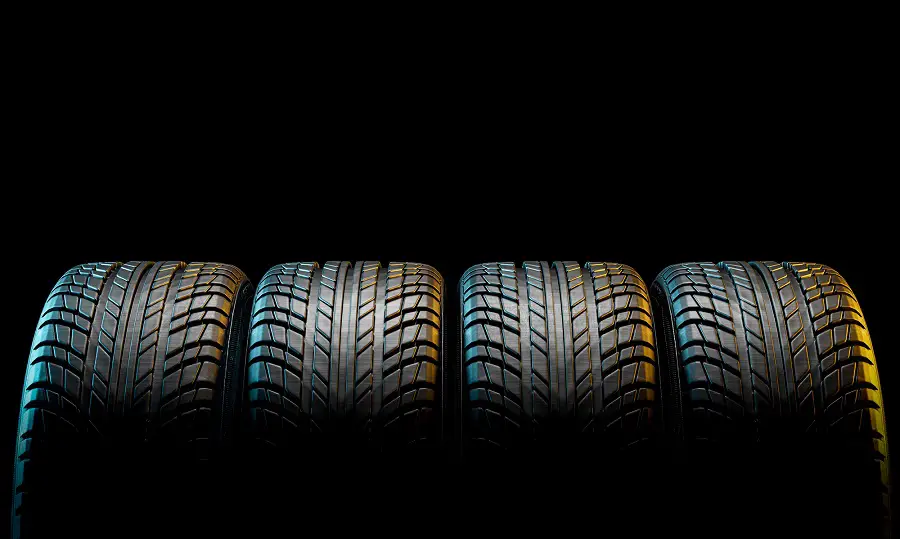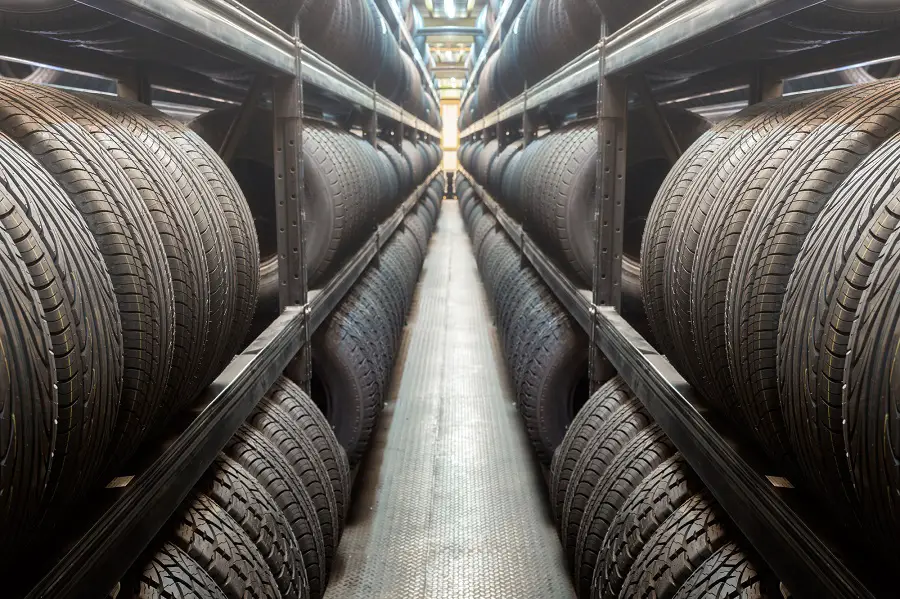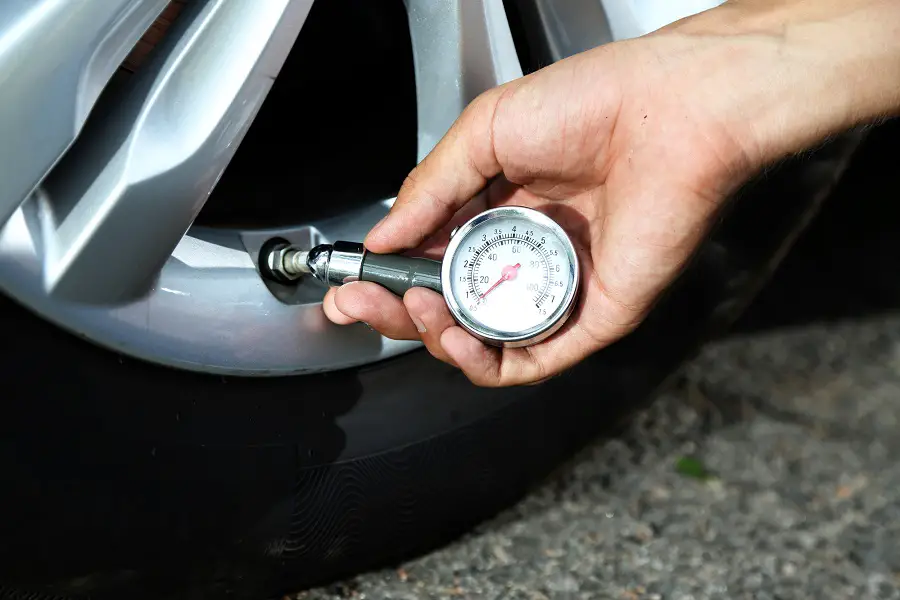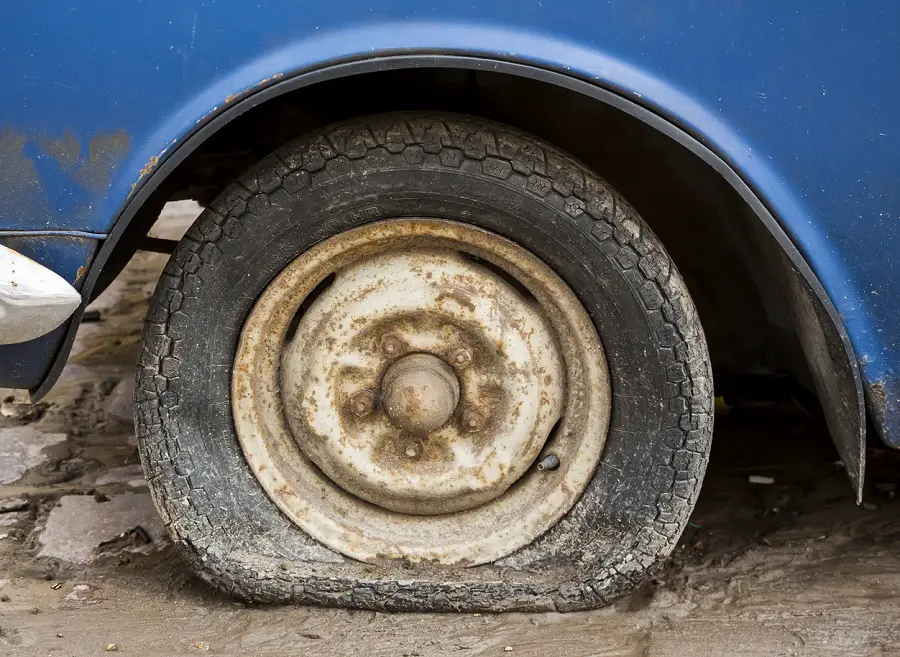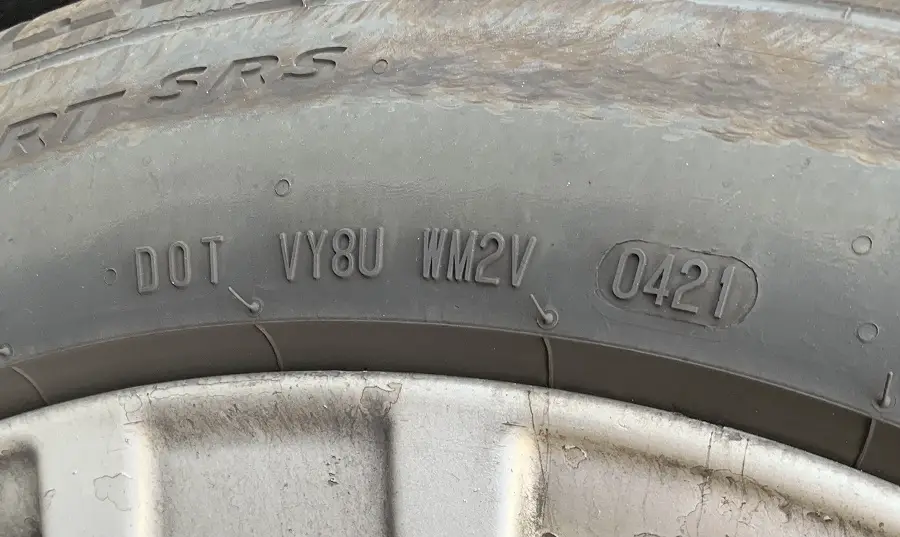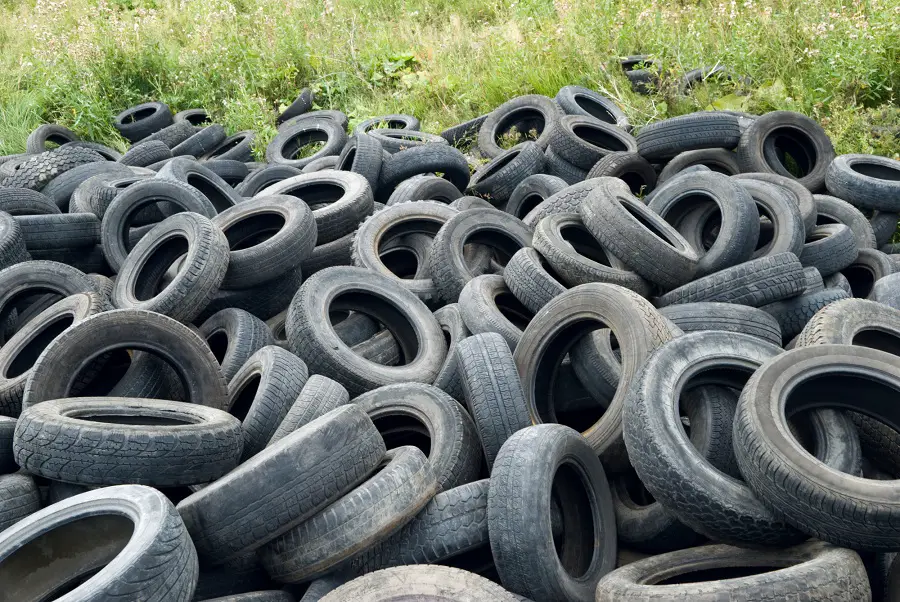The “driveway” leading to my childhood home was a rocky dirt road that was just over two miles long. In order to save time & money, my parents bought us an old ’73 Buick to drive back and forth to the bus stop.
It was a beater car. All my siblings and I learned how to drive in it.
As you can imagine, we had to replace a lot of parts during that time. Between busted shocks, broken parts and worn-out tires (it’s just a little too fun to “peel out” when you’re a kid!), we learned how to do quick repairs to get where we needed to go.
While working on my son’s project car last week, we saw that he had a low tire. He asked if he could pump it up and then grabbed the bike pump from the garage.
I had to tell him a story. But first, let me answer the question at hand:
You can pump up most car tires with a bicycle pump. As long as the floor pump has a Schrader valve fitting and can withstand the friction of pumping for several minutes, it can be done. Make sure that the leak is slow, the bead isn’t broken and the car tires aren’t too big.
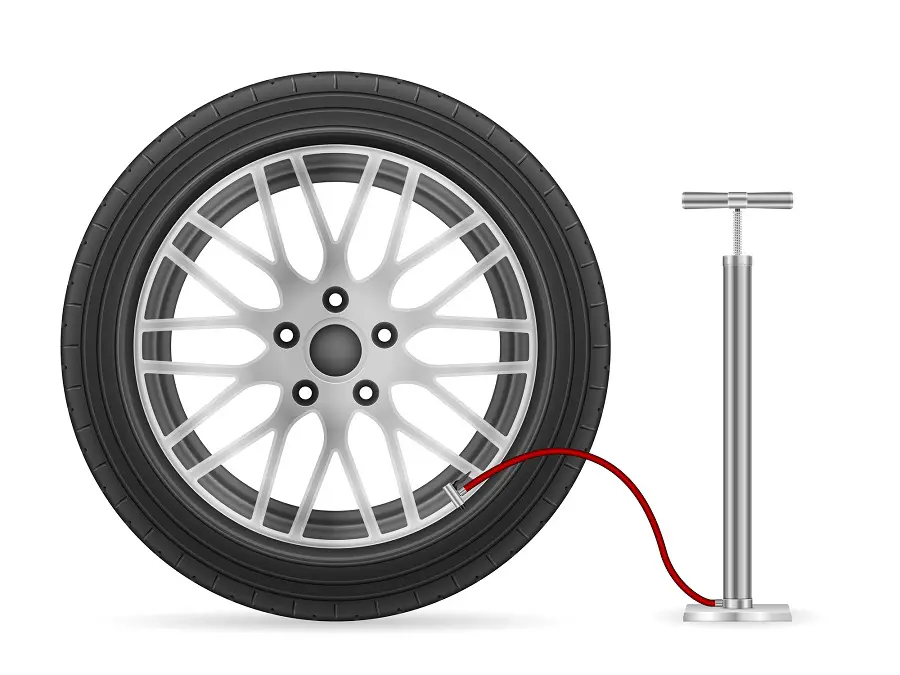
I’ve pumped up a car tire with a bike pump several times. I needed to get somewhere in a hurry only to find that the tire with the slow leak we’d ignored for over a week was now flat.
We didn’t have an air compressor.
So, thinking I had super mechanic skills, I grabbed our red Schwinn standard bike pump and got to work. It took me around 25 minutes of pumping before I had around 20 psi in the tire.
That was enough to make it to the gas station to get it filled up, and because it was a slow leak, I could ignore it for a few more days until I got it repaired.
It may seem like a silly notion to you, but it can be done in a pinch… but there are a few caveats to dealing with flat tires when all you have is a bike pump.
Does a bike pump work on a car tire?
In short, yes you can inflate an automobile tire with a bike pump. A bike pump is one that sits on the floor, has a plunger that goes up and down, and is normally used to fill bike tires to between 20 and 110 psi. Most of the time they can pump up a bicycle tire in less than a minute.
However, there are a few considerations to keep in mind since not just any ol’ bike pump will work for this task. This includes the target pressure of your car’s tires, the type of pump you have, the current tire pressure, and if it’s a slow or fast leak.
If you’re faced with using a bike pump to pump up a car tire, the goal is to fill the tire just enough to get to a tire shop or repair facility – and do it fast enough to justify not just putting the spare on.
Target Pressure
You can check for the tire’s target pressure by looking in two places. This should be noted on either the wall of the tire or inside the driver’s door. Important information should be listed in a chart on a sticker on the door. It will give the proper tire pressure for both the rear and front tires.
Pay close attention to the units that are used in this as you don’t want to use the wrong unit of measurement when inflating them. It will either be measured in PSI (pounds per square inch), Bar (imperial) or kPa (kilo Pascals – metric).
Type of Pump
You’ll need a specific type of pump for this purpose. There are two common valve types on bikes – Schrader & Presta.
Even if it’s considered to be for bike tires, if the pump has a Schrader receiver on it, this should work just fine. You’ll know it has a Schrader receiver if there’s a little pin in the middle of the opening.
This is pressed onto the tire, and it releases pressure. A pump with this type of receiver is common, so you may have it at home already.
The other type of valve common on bike pumps is the Presta Valve. This type of valve has a threaded pin that can be depressed when unscrewed. You won’t be able to use a Presta pump to fill a car tire as all car tires use Schrader valves – usually with removable cores.
You may also have access to a bike mini pump or a frame pump. Neither of these is a good option as they are barely big enough to use on a bike. You’ll also want to avoid any pump that is specifically designed for a road bike as they’re smaller and don’t produce enough air for most car tires.
Ultimately you want a pump that has a large enough cylinder so an adequate volume of air can be pumped with each stroke. Otherwise, you’ll never get the car tire filled.
Check the Pressure
You’ll want to know how much pressure the tire is before you try to inflate it with air. The best way to do this is to use a pressure gauge.
Some bicycle pumps have a pressure gauge on them.
You’d put the tire valve into the pressure gauge, apply pressure, then you’ll see it move to give you a reading. If you don’t have a gauge or don’t want to rely on the gauge that’s with the bike pump (which isn’t always accurate) you can fill it with enough air so that the rim isn’t touching the ground and there’s some air filling the sidewall (and tire).
Then, bring it in to a repair shop for assistance.
The Type of Leak
Is your car’s tire leaking air slowly or quickly? The answer to this determines how likely you’ll achieve success with a bike pump.
If the tire is leaking slowly, this is a good sign that you’ll most likely be able to use a bike pump.
If air is leaking out fast, this can indicate a worse issue and may require you to put the spare tire on the car or bring it to a repair shop for more extensive work.
In most cases, a bike pump won’t be able to keep up with a fast leak. No matter how quickly you pump.
When would you need to use a bike pump on a car tire?
If you need a quick fix when you are leaving for work and find that your tire has low pressure, you might break out your bicycle air pump. It’s ideal for when you have a slow leak and can’t see any other issues with the tire.
The other option would be if your spare tire, jack or lug wrench are missing or broken. In this case, one of your last resorts would be the bike pump.
You also might bring it somewhere for a patch on your way to wherever you have to go.
What are the limitations of a bike pump when using it on a car tire?
Remember that over and under-inflation of a tire can damage the tire and rim. This is why it’s necessary to be careful as you’re doing this so that you fill it up as accurately as possible.
Make sure you know which type of adapter plug isn’t compatible with your tires. Some bike pumps have a unique plug design that shouldn’t be used for automobiles.
Portable bicycle pumps (that can hook onto bike frames and you can take it with you wherever you go) aren’t a good option for car tires.
Even if you attempt it, you’ll need to pump hundreds or thousands of times to inflate the tires. Who wants to do that?
How Long Does it Take to Pump Up a Car Tire with a Bike Pump?
It can take a while. Unless you have a high-volume bike pump (like something designed for mountain bikes or fat tire bikes), you’re looking at 15 to 20 minutes in most cases. Maybe longer.
Obviously, it depends on how flat the car tire is, how quickly the air leaks and how fast you can pump.
Just know that you’re probably not going to pump up a car tire with air to its maximum pressure with a bike pump alone.
How to Inflate a Car Tire with a Bike Pump
Now that you know you can pump up a car tire with a bike pump and decide you need the workout, here’s how to do it.
- Make sure you’re in a safe place. Don’t try and pump up any tire if you’re close to busy traffic. Pull far enough off the road or into your garage so you’re not on a hill or by cars.
- Check the pressure in the low/flat tire. (if you have a tire pressure gauge). To do this you’ll have to remove the valve caps.
- Check that the tire isn’t coming off of the wheel (still has the bead intact).
- Look for the cause of the leak. If it’s a screw or nail, and it’s still in the tire, you should be able to pump it up. If the leak was caused by a large chunk of metal, you’re out of luck.
- If the leak is slow enough (or the hole is small enough) you can proceed to use a bike pump to fill the tire.
- Place the pump head on the air valve of the car tire (again, make sure the pump is designed for a Schrader valve stem). Most pumps will have a way to “lock” the air pump onto the valve.
- Start pumping.
- Keep pumping until you see a change in the tire or reach 50 strokes. At this point, check the tire pressure again. If you’re making progress, keep going. If not, you may need to re-assess your approach.
- Once the tire is at an acceptable pressure, you can disconnect the pump, reinstall the valve cap on the tire valve and drive to the nearest repair facility or service station where you can use an air compressor to finish the job.
Can you use a CO2 pump?
CO2 tire “pumps” are made for inflating bike tires quickly – they are portable and fast for bikes. They’re usually used during races or when you’re on an intense training ride.
However, these wouldn’t work on car tires. The amount of gas in these types of pumps isn’t sufficient to fill a car tire – even just “enough” to get you back on the road.
They do make emergency CO2 tire inflators for cars. The tank for this type can be refilled and is controlled by a valve and gauge. This means that it’s an excellent choice for filling up your tires with air accurately. Larger versions can be quite expensive, though it’s well worthwhile in terms of saving you time and the headache of having to run to the repair shop.
This might be a good time to order one and put it in your car “just in case”.
Which Bicycle Pump Should You Use to Inflate a Car Tire
The whole point of this article was to answer the question of what to do if you find your car’s tire flat and you don’t have a way to pump it up – other than a bike pump. Obviously, you’d want a pump that moves a lot of air quickly.
A floor pump that has a large chamber and a tight seal would work well. A foot-operated floor pump would also be a good option.
If you want a good bike pump, you want one that pushes out a lot of air quickly. Here’s a review of the one we’ve loved for years – Topeak Joe Blow Sport II – but it’s hard to find now. It’s been replaced by the Joe Blow Sport III.
Better Options to Fill a Flat Car Tire
If you made it this far into the article, maybe you’re now convinced that you don’t really want to try and use a bike pump to inflate your car tire. If that’s the case, we have a few more options for you:
Gas Station Air Center
Many gas stations have air compressor stations that are either free or a dollar. It used to be that you had to carry change with you so you could use one of these machines. Anymore, if you can find them, they’re usually free.
Otherwise, they usually accept credit cards at the machine.
Then it’s as simple as using it to fill your low tire and then get it repaired.
Tire Repair Center
A lot of tire shops, like Discount Tire or Tire Rack, will check and fill your tires for free. Some, like the Discount Tire near my house, will repair your punctured tire for free – you just have to have enough air in your tire to make it there.
Tire Inflator & Sealant
The most well-known tire sealant for cars is Fix-a-Flat (a great deal as it’s sold on Amazon as a Pack of 2 currently) This is a quick way to fill your tire in an emergency and it will often fill/stop small leaks.
You connect the small hose from the canister to your tire valve and fill the tire with the sealant and compressed air. It won’t get you to the correct pressure all the time, but it should get you enough to get you on the way.
This is a good reminder that you should pick up a couple of cans of this stuff and keep in your car in case of an emergency – for you or someone you come across on the road.
Air Compressors & Electric Pumps
Finally, for around the same price as a couple of cans of Fix-a-Flat, you can buy a portable air compressor. Most of these are designed for cars and will come with a DC adapter plug so you can plug it into your car’s power outlet (what used to be known as the cigarette lighter).
Using portable pumps like this will usually result in getting your tire to the correct air pressure and get you back on the road.
Many of these little compressors come with a digital gauge. This is the current best-selling portable air compressor on Amazon.
If you need to use a bike pump to fill your tire – we wish you luck – and hopefully, you were able to learn something from this article. Even if that was just that you would rather carry a pump or can of inflator with you!
Keep the rubber down.

